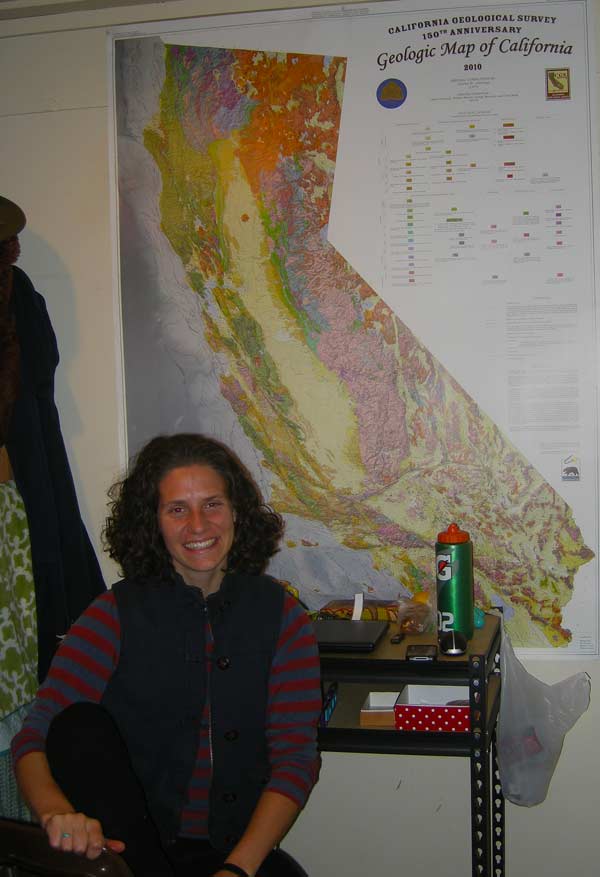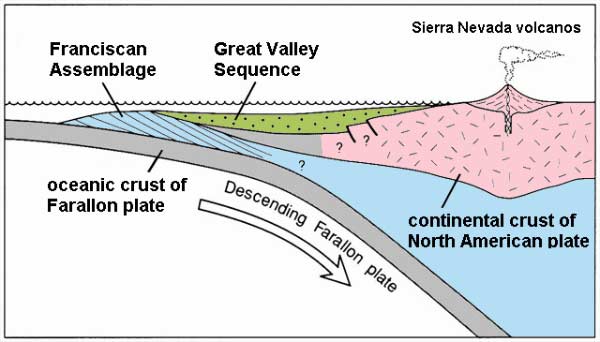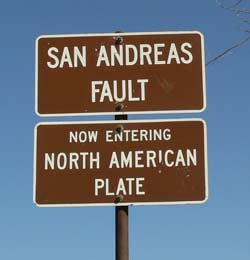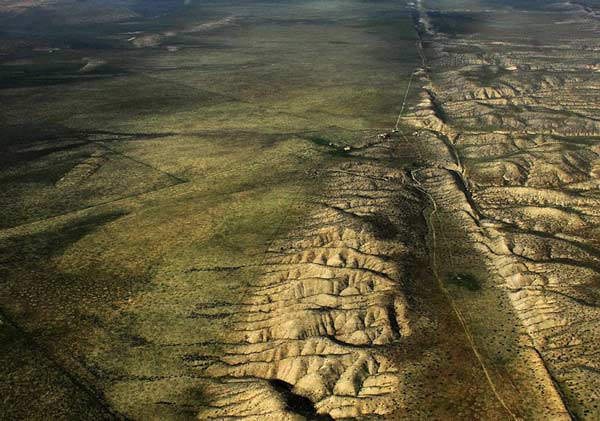 Plate tectonics, and the idea that rocks could be “born” in one place then moved to another place to create a completely different environment, has fascinated me for years. I picked up John McPhee’s book, Assembling California, in the hopes of learning more about the geology of our region, and plate tectonics in general, to improve my Earthworks class here at High Trails. What I wasn’t prepared for was how scientifically dense the text would be or how fascinated I would become with this book.
Plate tectonics, and the idea that rocks could be “born” in one place then moved to another place to create a completely different environment, has fascinated me for years. I picked up John McPhee’s book, Assembling California, in the hopes of learning more about the geology of our region, and plate tectonics in general, to improve my Earthworks class here at High Trails. What I wasn’t prepared for was how scientifically dense the text would be or how fascinated I would become with this book.
Assembling California follows the author as he travels a cross-section of California from the Lake Tahoe area to San Francisco with a geologist. At every stop, a story is told for the geology for the area.
The story may begin in present day California, but quickly the reader is flown around the world to Cyprus, where mountains with a similar geological structure and history as some of the Sierra Nevada Mountains can be found. Or the reader is sent back in time billions of years to supercontinents that provided the backbone for the present-day North American continent. At the next stop of the author’s journey, the reader might start in the middle of California’s Central Valley and on the next page is transported onto the ocean’s floor watching magma sludge out of a trench creating new crust.
The book might be about the present state of California’s landscape, but if McPhee is trying to teach the reader anything it is that the rocks we stand on are anything but stagnate and unchanging. We must look at a much larger picture both geographically and temporally.
 This theme of a constantly shifting earth is embodied by the theory of plate tectonics. McPhee wrote Assembling California in 1993 and was doing most of his research in the mid to late 1980s when the theory of plate tectonics was only about 20 years old. Therefore, McPhee presents the information as answers to a puzzle that has baffled scientists for years, and the reader becomes just as excited as the author in the discovery.
This theme of a constantly shifting earth is embodied by the theory of plate tectonics. McPhee wrote Assembling California in 1993 and was doing most of his research in the mid to late 1980s when the theory of plate tectonics was only about 20 years old. Therefore, McPhee presents the information as answers to a puzzle that has baffled scientists for years, and the reader becomes just as excited as the author in the discovery.
For example, the western edge of California is made up of a hodgepodge of rocks and sediments, called Franciscan. McPhee explains Franciscan rock as “the scaly clay in which are embedded all the continental shards and abyssal sediments, the bits of seamounts and ocean crust, the litter of half the world” . Originally geologists tried to explain this mélange of sediments by erosion with only minor success. However, the Franciscan collects such a wide range of sediments that “one might as well empty a cement mixer and try to number the pebbles in the order in which they entered the machine” .
 Once the theory of plate tectonics was introduced, the formation of Franciscan suddenly made sense in the context of a “great ocean slab diving towards the center of the earth, where large pieces of vari-colored country came together, and where competent rock was crushed to scaly clay. After the churning stopped and the whole mixture was lifted into the weather, the more solid chucks very soon stood high and the soft stuff washed down”.
Once the theory of plate tectonics was introduced, the formation of Franciscan suddenly made sense in the context of a “great ocean slab diving towards the center of the earth, where large pieces of vari-colored country came together, and where competent rock was crushed to scaly clay. After the churning stopped and the whole mixture was lifted into the weather, the more solid chucks very soon stood high and the soft stuff washed down”.
 I quote McPhee here to not only illustrate how plate tectonics explains so much, but also to give a sense of McPhee’s poetry when he writes. His words paint vivid pictures of continent-size rocks crunching against each other and land being formed. Many times, his descriptions are wordy and complex, however if the reader can stick with it, the reward of understanding is great. At the beginning, I struggled in deciphering the geologic terms McPhee throws around, but once I started to reference the geologic map of California I happen to have, McPhee’s poetry came alive for me.
I quote McPhee here to not only illustrate how plate tectonics explains so much, but also to give a sense of McPhee’s poetry when he writes. His words paint vivid pictures of continent-size rocks crunching against each other and land being formed. Many times, his descriptions are wordy and complex, however if the reader can stick with it, the reward of understanding is great. At the beginning, I struggled in deciphering the geologic terms McPhee throws around, but once I started to reference the geologic map of California I happen to have, McPhee’s poetry came alive for me.
One caveat to readers from Southern California; the specific regional geology of Southern California and the San Bernardino Mountains is not explained in great detail here. However, that does not by any means mean that Southern California readers will not benefit from following McPhee.
On the contrary, this book provides a wide range look at the formation of the West Coast and an understanding of the forces at work on our earth. One feature, the San Andreas Fault, which plays a role in the formation of our mountains, has several chapters devoted to it.
 The book ends on the slightly ominous tone of warning to those living in California near the fault. We like to think of our landscape as steady and unchanging; all previous motion has “set the stage for us and were now frozen”. However, the reality of the matter is that the times between geologic events, such as earthquakes or volcanic eruptions, seem long only on a human timescale. On a geologic timescale the world is still shifting, building, and breaking down.
The book ends on the slightly ominous tone of warning to those living in California near the fault. We like to think of our landscape as steady and unchanging; all previous motion has “set the stage for us and were now frozen”. However, the reality of the matter is that the times between geologic events, such as earthquakes or volcanic eruptions, seem long only on a human timescale. On a geologic timescale the world is still shifting, building, and breaking down.
The reality of living on this dynamic earth is clearly expressed in John McPhee’s book leaving readers with a sense of how short and fragile our life on this planet is, while at the same time giving us a sense of wonder and awe at the forces that create our world.
At High Trails Outdoor Science School, we literally force our instructors to write about elementary outdoor education, teaching outside, learning outside, our dirty classroom (the forest…gosh), environmental science, outdoor science, and all other tree hugging student and kid loving things that keep us engaged, passionate, driven, loving our job, digging our life, and spreading the word to anyone whose attention we can hold for long enough to actually make it through reading this entire sentence. Whew…. www.dirtyclassroom.com

Comments are closed.